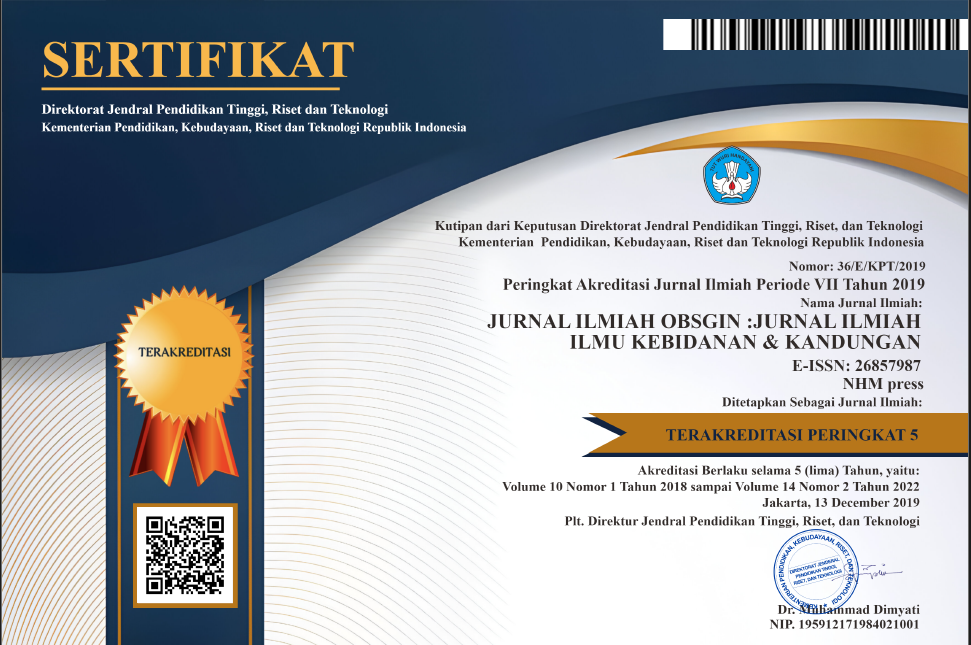Deteksi Dini Kanker Payudara Menggunakan Metode Gans (Generative Adversarial Network) Dilihat Dari Segi Filosofi: Narrative Review (NR)
Abstract
Early detection of cancer using artificial intelligence (AI) from a healthcare perspective is crucial as it significantly increases the chances of successful treatment and reduces the risk of mortality. This aspect is emphasized as a vital factor in enhancing early cancer detection in patients and improving survival rates from a philosophical perspective. This article highlights that early detection can also help reduce the high costs associated with cancer treatment. By identifying the disease at an early stage, patients may require less intensive and less expensive treatment, which can alleviate the burden on both patients and their families. However, there are challenges, as over time, breast cancer becomes more difficult to treat, leading to a decrease in survival rates, necessitating the implementation of effective early detection methods. The development of pattern recognition methods is discussed as a means to improve the accuracy of early cancer detection. The results present a framework for analyzing human-computer interaction that incorporates a philosophical perspective, providing a structured approach to evaluating the implications of technology on human life.
References
Aoki, S., & Fujita, S. (2021). Self-Transcendence of Japanese Female Breast Cancer Patients with Hereditary Breast and Ovarian Cancer Syndrome. Asia-Pacific Journal of Oncology Nursing, 8(6), 670–678. https://doi.org/10.4103/apjon.apjon-218
Arooj, S., Khan, M. F., Shahzad, T., Khan, M. A., Nasir, M. U., Zubair, M., Atta-ur-Rahman, & Ouahada, K. (2023). Data Fusion Architecture Empowered with Deep Learning for Breast Cancer Classification. Computers, Materials and Continua, 77(3), 2813–2831. https://doi.org/https://doi.org/10.32604/cmc.2023.043013
Buongiorno, F., & Chiaramonte, X. (2024). Do we really need a “Digital Humanism”? A critique based on post-human philosophy of technology and socio-legal techniques. Journal of Responsible Technology, 18(March). https://doi.org/10.1016/j.jrt.2024.100080
Chaturvedi, R., Verma, S., Das, R., & Dwivedi, Y. K. (2023). Social companionship with artificial intelligence: Recent trends and future avenues. Technological Forecasting and Social Change, 193(May). https://doi.org/10.1016/j.techfore.2023.122634
Dombi, J., Sydorenko, T., & Timpe-Laughlin, V. (2022). Common ground, cooperation, and recipient design in human-computer interactions. Journal of Pragmatics, 193, 4–20. https://doi.org/10.1016/j.pragma.2022.03.001
Eddebo, D. J. (2021). The Faustian Machine and the Chrome Lotus: On the diversity of perspectives on the metaphysics of artificial intelligence with a particular focus on the contributions of traditional non-Western thought. New Techno Humanities, 1(1–2), 100001. https://doi.org/10.1016/j.techum.2021.100001
Jarota, M. (2023). Artificial intelligence in the work process. A reflection on the proposed European Union regulations on artificial intelligence from an occupational health and safety perspective. Computer Law and Security Review, 49. https://doi.org/10.1016/j.clsr.2023.105825
Jiang, T., Sun, Z., Fu, S., & Lv, Y. (2024). Human-AI interaction research agenda: A user-centered perspective. Data and Information Management, 8(July). https://doi.org/10.1016/j.dim.2024.100078
Kadry, S., Crespo, R. G., Herrera-Viedma, E., Krishnamoorthy, S., & Rajinikanth, V. (2023). Classification of Breast Thermal Images into Healthy/Cancer Group Using Pre-Trained Deep Learning Schemes. Procedia Computer Science, 218, 24–34. https://doi.org/https://doi.org/10.1016/j.procs.2022.12.398
Khan, S. I., Shahrior, A., Karim, R., Hasan, M., & Rahman, A. (2022). MultiNet: A deep neural network approach for detecting breast cancer through multi-scale feature fusion. Journal of King Saud University - Computer and Information Sciences, 34(8, Part B), 6217–6228. https://doi.org/https://doi.org/10.1016/j.jksuci.2021.08.004
Krishna, S., Suganthi, S. S., Bhavsar, A., Yesodharan, J., & Krishnamoorthy, S. (2023). An interpretable decision-support model for breast cancer diagnosis using histopathology images. Journal of Pathology Informatics, 14(May). https://doi.org/10.1016/j.jpi.2023.100319
Mehak, S., Usman Ashraf, M., Zafar, R., Alghamdi, A. M., Alfakeeh, A. S., Alassery, F., Hamam, H., & Shafiq, M. (2021). Automated Grading of Breast Cancer Histopathology Images Using Multilayered Autoencoder. Computers, Materials and Continua, 71(2), 3407–3423. https://doi.org/https://doi.org/10.32604/cmc.2022.022705
Neubauer, A. C. (2021). The future of intelligence research in the coming age of artificial intelligence – With a special consideration of the philosophical movements of trans- and posthumanism. Intelligence, 87(June). https://doi.org/10.1016/j.intell.2021.101563
O’Donohue, W. (2023). The Scientific Status of Acceptance and Commitment Therapy: An Analysis From the Philosophy of Science. Behavior Therapy, 54(6), 956–970. https://doi.org/10.1016/j.beth.2023.07.006
Pearce, H. (2024). Christian perspectives on the regulation of posthumous medical data donation (PMDD): An empirical study. Computer Law and Security Review, 55(September). https://doi.org/10.1016/j.clsr.2024.106052
Perkins, H. (2024). Beyond techno-solutionism: Towards critical perspectives in environmental education and digital technology. A critical-hermeneutic review. International Journal of Child-Computer Interaction, 42(October). https://doi.org/10.1016/j.ijcci.2024.100705
Ramsdale, E., Kunduru, M., Smith, L., Culakova, E., Shen, J., Meng, S., Zand, M., & Anand, A. (2023). Supervised learning applied to classifying fallers versus non-fallers among older adults with cancer. Journal of Geriatric Oncology, 14(4), 0–6. https://doi.org/10.1016/j.jgo.2023.101498
Roy, M., Wang, F., Teodoro, G., Bhattarai, S., Bhargava, M., Rekha, T. S., Aneja, R., & Kong, J. (2023). Deep learning based registration of serial whole-slide histopathology images in different stains. Journal of Pathology Informatics, 14(April). https://doi.org/10.1016/j.jpi.2023.100311
Shahin, M., Chen, F. F., Hosseinzadeh, A., & Maghanaki, M. (2024). Deploying deep convolutional neural network to the battle against cancer: Towards flexible healthcare systems. Informatics in Medicine Unlocked, 47(April). https://doi.org/10.1016/j.imu.2024.101494
Stahl, B. C., Brooks, L., Hatzakis, T., Santiago, N., & Wright, D. (2023). Exploring ethics and human rights in artificial intelligence – A Delphi study. Technological Forecasting and Social Change, 191(September 2021). https://doi.org/10.1016/j.techfore.2023.122502
UrviOza, Gohel, B., & Kumar, P. (2024). Evaluation of Normalization Algorithms for Breast Mammogram Mass Segmentation. Procedia Computer Science, 235, 2508–2517. https://doi.org/https://doi.org/10.1016/j.procs.2024.04.236
Zhao, P., Wei, Y., & Wang, S. (2024). Exploring behavior patterns in human and machine interactions. Fundamental Research, 0–26. https://doi.org/10.1016/j.fmre.2023.12.021











